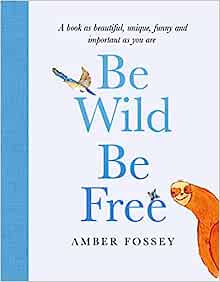Art has long been a refuge for those navigating the complexities of the human condition. For many, it offers an unspoken language to explore pain, fear, and sorrow – emotions we often bury. Dark art, with its raw and often haunting imagery, is a way to confront the shadows within us.
In this post, we’ll delve into how darker artistic themes can serve as a healthy outlet for processing complex emotions, helping lost souls find light in the shadows.
The Nature of Dark Art
Dark art is a genre that embraces the macabre, mysterious, and melancholic. From the eerie landscapes of Edward Gorey to the visceral intensity of Francisco Goya’s Black Paintings, dark art challenges societal norms of beauty and embraces the full spectrum of human experience, including its darker facets. This genre is not about glorifying pain but about acknowledging its existence and giving it a voice.
For many, creating or viewing dark art offers validation, and a recognition that their feelings are not only real but also worth exploring.
WHY EMBRACE THE SHADOWS?
A Safe Space for Emotions
Psychological darkness is often misunderstood, yet it is an integral part of being human. Dark art provides a judgment-free zone to express complex emotions like grief, anger, or despair. By externalising these feelings onto a canvas, into words, or through music, individuals can confront what might otherwise remain unspoken and suppressed.
Breaking the Taboo of Pain
Society often encourages a ‘stay positive’ mindset, so those who struggle with negative emotions feel that they are fighting battles they can’t win. Dark art challenges this narrative, proving that beauty exists in the raw truth of suffering. It says: “You’re not alone in your darkness.”
Transformation Through Creation
The act of creation itself is transformative. Turning pain into a piece of art not only gives the artist a healthy outlet, but also gives them some power over the emotion.
THE THERAPEUTIC VALUE OF DARK ART
Dark art aligns closely with the principles of catharsis, a psychological process that involves releasing suppressed emotions to achieve relief and healing. Here’s how it helps:
Exploration Without Fear
Creating dark art allows individuals to explore their fears or traumas in a controlled way. They can depict their struggles, giving form and texture to what often feels intangible.
A Tangible Record of Healing
Each piece of dark art created becomes a marker of a moment in the healing journey. Revisiting these works can provide perspective on growth and change.
Connecting with Others
Sharing dark art can foster connections. Others who resonate with the themes may find comfort in knowing they’re not alone, creating a sense of community.
HOW TO BEGIN CREATING DARK ART
If you’re intrigued by the idea of using dark art as a means of self-expression, here are a few ways to get started:
Draw Your Shadows
Sketch or paint imagery that represents your emotional state. Don’t worry about making it ‘pretty’ – let it be raw and unfiltered.
Write Through the Darkness
Try writing a poem, story, or even fragmented thoughts inspired by your inner struggles. Stream-of-consciousness writing can be particularly freeing.
Experiment with Mixed Media
Combine different textures, colours, and materials to create layered works. Torn paper, charcoal, and muted tones can evoke feelings of decay or renewal. Again, it isn’t supposed to be perfect or worthy of being on display at the Tate.
Explore Symbolism
Use symbols that hold personal meaning—ravens for transformation, broken clocks for lost time, or jagged edges for unresolved pain.
STUDYING DARK ART
You don’t have to create dark art to benefit from it. Viewing others’ work – be it visual art, literature, or music – can be equally cathartic. It’s a reminder that someone else has felt what you feel and found a way to transform it into something meaningful.
Literature: Read authors like Edgar Allan Poe, Sylvia Plath, or Franz Kafka, who explore themes of despair and introspection.
Music: Listen to genres like gothic rock, post-punk, or ambient music, where haunting melodies and introspective lyrics embrace the theme.
Visual Art: Visit online galleries or social media accounts that showcase dark-themed artists. Sometimes, simply seeing your emotions reflected in art can be profoundly validating.
FINDING LIGHT IN THE SHADOWS
Dark art teaches us that it’s okay not to be okay. It shows us that there is beauty in the struggle, that our pain has a place in the world, and that even the darkest shadows can be illuminated. Whether you’re a creator or a consumer of dark art, let it guide you toward understanding, expression, and ultimately, healing.
The light you seek isn’t about erasing the darkness – it’s about learning to navigate through it. Shadows remind us that there is light shining somewhere.
Featured image by: https://unsplash.com/@tama66



